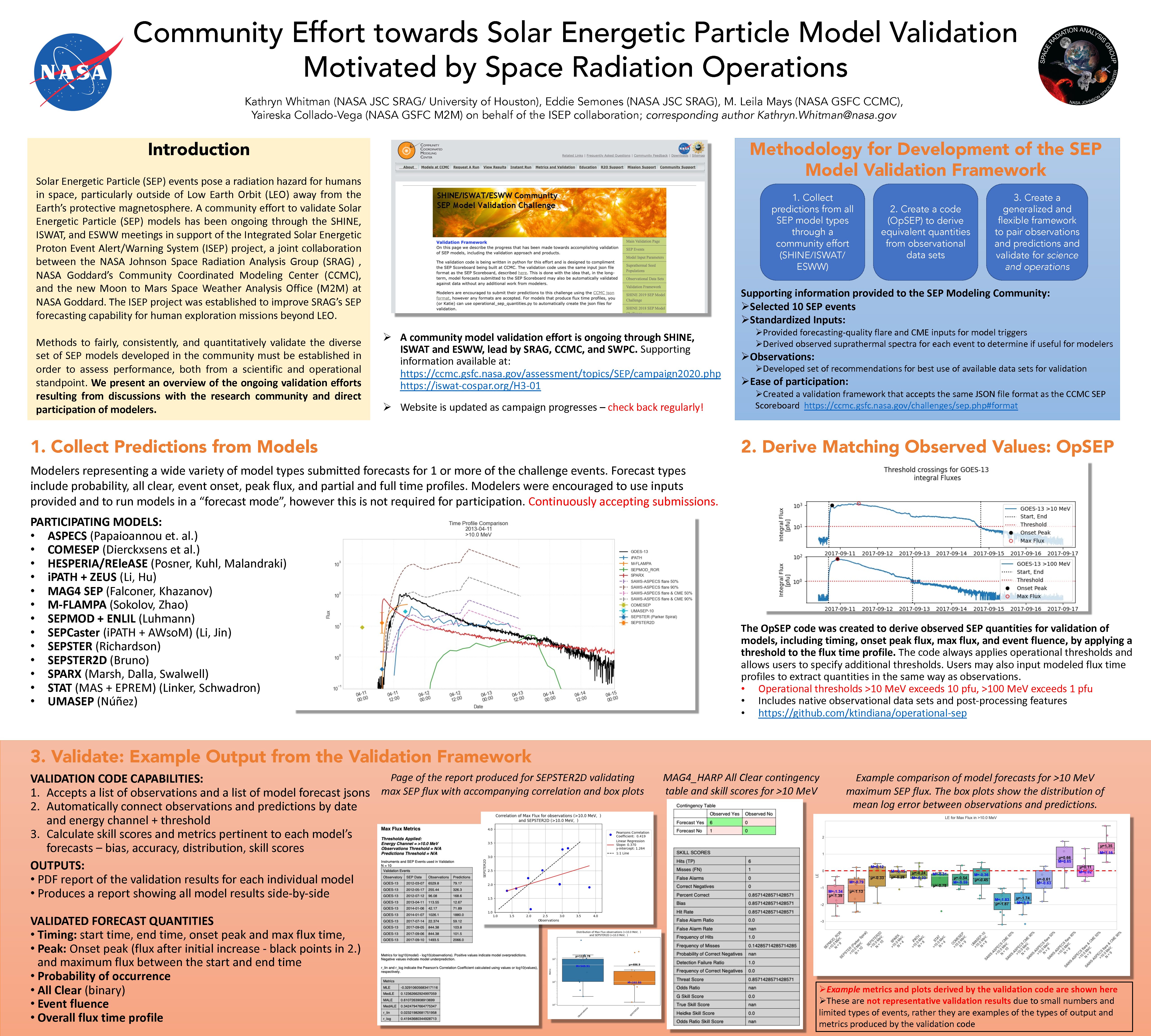Authors: Kathryn Whitman (NASA JSC SRAG/ University of Houston), Eddie Semones (NASA JSC SRAG), M. Leila Mays (NASA GSFC CCMC), Yaireska Collado-Vega (NASA GSFC M2M)
Solar Energetic Particle (SEP) events pose a radiation hazard for humans in space, particularly outside of Low Earth Orbit (LEO) away from the Earth’s protective magnetosphere. A community effort to validate Solar Energetic Particle (SEP) models has been ongoing through the SHINE, ISWAT, and ESWW meetings in support of the Integrated Solar Energetic Proton Event Alert/Warning System (ISEP) project, a joint collaboration between the NASA Johnson Space Radiation Analysis Group (SRAG) , NASA Goddard’s Community Coordinated Modeling Center (CCMC), and the new Moon to Mars Space Weather Analysis Office (M2M) at NASA Goddard. The ISEP project was established to improve SRAG’s SEP forecasting capability for human exploration missions beyond LEO.
Methods to fairly, consistently, and quantitatively validate the diverse set of SEP models developed in the community must be established in order to assess performance, both from a scientific and operational standpoint. We present an overview of the ongoing validation efforts resulting from discussions with the research community and direct participation of modelers.


